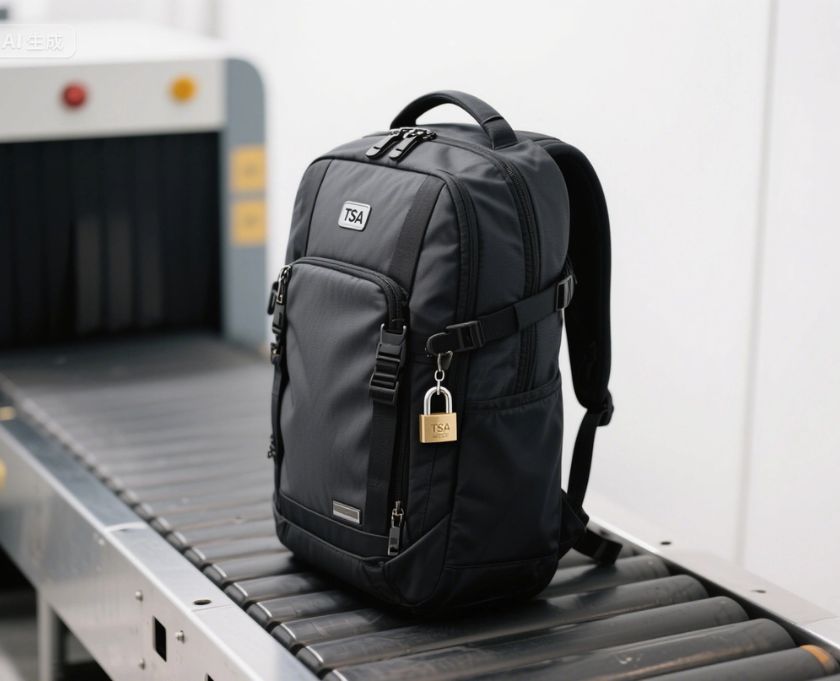Beautiful Plants For Your Interior

Traveling today often means passing through multiple security checkpoints—especially in the U.S. An integrated TSA‑approved lock, certified by Travel Sentry, allows airport agents to open and relock your backpack if needed without damaging your bag. These locks strike the perfect balance between travel security and convenience.
Why TSA‑Approved Locks Matter in Travel Backpacks
TSA‑approved locks ensure that your bag remains secure yet accessible when undergoing mandatory luggage inspections. Non-authorized locks must be cut or forced open if inspection is needed, often resulting in damage. For casual theft deterrents, a built-in TSA lock also adds real-time protection without interfering with international security regulations.
What Is a TSA‑Approved Lock?
- Developed to Travel Sentry standards and recognized by agencies like the TSA (USA) and CATSA (Canada), among others.
- Security agents carry special master keys to open, inspect, and re-lock your luggage.
- Internationally accepted across dozens of countries, not only the U.S.
Key Features to Look For in a TSA‑Lock Backpack
- Built-in TSA lock assembly: Often visible on zippers or integrated hardware.
- Lockable zipper pulls: Zipper tabs that clip together through the lock body.
- Anti-theft design: Slash-resistant straps or panels complement the lock system.
- Carry-on compliance: Ideally 30–40 L fits overhead bin or personal item size.
- Durable fabric: Water resistance, quality YKK zippers, and reinforced seams.
Top Travel Backpacks Featuring TSA‑Approved Locks
- Pacsafe GO Anti‑Theft 34L Carryon Backpack
Includes integrated lockable zippers, slash-resistant straps with Dyneema wire, and a clip lock system. It’s an ideal secure carry-on pick. - Béis Commuter Backpack (with TSA-approved lock)
Combines sleek commuter styling with a TSA lock, multiple compartments, and a trolley sleeve. Popular among style-conscious travelers. - Lovevook 40L Travel Backpack
Budget-friendly, TSA lock–equipped, waterproof, and includes packing cubes—ideal for beginners or occasional travelers.
Brand Spotlight – Pacsafe & Béis
- Pacsafe: A pioneer in anti-theft gear since 1998, licensed by Travel Sentry for TSA-compliant locks. Their gear often includes Exomesh slash protection and locking systems.
- Béis: Founded by high-profile designers, Béis blends fashionable aesthetics with practical TSA lock inclusion and smart internal organization.
Pros & Cons of TSA-Approved Lock Travel Backpacks
| Pros | Cons |
|---|---|
| ✅ Allows TSA and international agents to inspect without damage | ❌ Master keys exist — a rare but potential vulnerability |
| ✅ Offers peace of mind during layovers and hotel storage | ❌ Adds a bit of weight or bulk to zipper systems |
| ✅ Often integrated into higher-quality anti-theft backpacks | ❌ More expensive than standard backpacks |
| ✅ Accepted in most airports worldwide | ❌ Some cheap models have low-quality lock mechanisms |
While not foolproof, TSA locks provide an effective baseline level of travel security — especially when paired with slash-resistant fabric and RFID protection.
How to Use the TSA Lock Properly
Using your TSA-approved lock is easy but must be done correctly:
- Set a Custom Code
Most locks default to000. Follow manufacturer instructions to set a unique 3-digit combination. - Align the Zipper Pulls
Insert the zipper pulls into the lock head and slide into place until it clicks. - Label Your Code Discreetly
Use a password manager or note in your phone (disguised entry) to avoid lockouts. - Keep it Unlocked When Required
Some international flights or destinations (like Israel or some small airports) may require unlocked bags. - Never Lock Checked Bags with Non-TSA Locks
They will likely be cut open by security.
Care & Maintenance Tips for TSA Locks
- Inspect the mechanism before every trip. A faulty lock may jam or prevent opening.
- Avoid overstuffing your backpack near the locking zippers — this prevents alignment.
- Keep locks dry and clean. Wipe with a dry microfiber cloth and avoid sand/dirt.
- Don’t force the lock. If it resists, double-check the code and zipper orientation.
- Test before flying. Lock and unlock it a few times to ensure functionality.
Frequently Asked Questions (FAQs)
Q1: Are TSA-approved locks mandatory for air travel?
No, but they are strongly recommended for checked baggage and international flights to prevent forced openings during inspections.
Q2: Can TSA locks be broken into?
Yes — no lock is 100% theft-proof. TSA locks deter opportunistic theft, not determined criminals. Use in conjunction with anti-theft materials.
Q3: Are these locks recognized outside the U.S.?
Yes. Over 40+ countries follow Travel Sentry standards, including Canada, Japan, UK, Germany, and Singapore.
Q4: What if I forget my lock code?
You’ll likely need to reset the lock manually or contact the manufacturer. Some models require proof of purchase.
Q5: Can I use my own external TSA lock on a backpack?
Yes, if the zippers have locking tabs. However, built-in locks are harder to lose and often better integrated.
Q6: What’s better: built-in or external TSA locks?
Built-in locks offer better convenience and integration, but external ones provide more flexibility if you switch bags often.